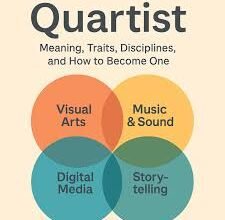Streaming Platforms and Modern Media Consumption

The way people consume media has undergone a radical transformation over the past two decades. Traditional television, radio, and cinema are no longer the primary sources of entertainment and information. Instead, streaming platforms have emerged as the dominant medium for content distribution, giving viewers unprecedented control over what, when, and how they watch. These platforms leverage advanced technology, personalization algorithms, and vast content libraries to provide experiences that cater to individual preferences. From binge-watching series to live streaming events, the impact of streaming platforms on modern media consumption is profound. They have not only redefined entertainment but also influenced social trends, business models, and creative production in ways that were unimaginable in the era of broadcast media.
1. The Evolution of Streaming Platforms
Streaming platforms emerged as a response to the limitations of traditional media. Whereas television schedules dictated when viewers could watch their favorite shows, and physical media limited access to content, streaming technology allowed audiences to watch anytime, anywhere. Early pioneers like YouTube demonstrated the potential of user-generated content, while services like Netflix and Hulu transformed the landscape by offering subscription-based access to professionally produced content. Over time, the evolution of high-speed internet, mobile devices, and cloud storage enabled seamless streaming experiences, facilitating high-definition video and interactive features. Today, streaming platforms are not only entertainment hubs but also ecosystems for creators, marketers, and consumers, reshaping the entire media landscape.
2. Personalization and User Experience
One of the most significant advantages of streaming platforms is personalization. Through algorithms that analyze viewing habits, preferences, and engagement patterns, platforms can recommend content tailored to individual tastes. This has transformed the viewer experience from passive consumption to an interactive, curated journey. Services like Netflix, Spotify, and Disney+ use AI-driven recommendations to increase engagement, retention, and satisfaction. The ability to discover content that aligns with personal interests keeps audiences invested and allows platforms to collect valuable data for improving services. Additionally, personalized interfaces, watchlists, and notifications create a sense of ownership and convenience, which traditional media outlets could not offer.
3. Impact on the Entertainment Industry
Streaming platforms have dramatically impacted the entertainment industry, from production to distribution. Traditional television networks and cinemas now face stiff competition, pushing them to innovate or adapt. The rise of streaming has also changed production strategies; creators now consider binge-watchability, global appeal, and algorithm-driven discoverability when developing content. Furthermore, platforms often provide funding for original productions, enabling niche genres and diverse storytelling that might not have been commercially viable in the past. As a result, the industry has become more inclusive, experimental, and data-driven, reflecting changing audience expectations in the digital era.
4. The Rise of Live Streaming and Interactive Media
Beyond on-demand video, live streaming has emerged as a popular form of real-time entertainment and engagement. Platforms like Twitch, YouTube Live, and Facebook Live allow users to broadcast events, gameplay, tutorials, and performances to global audiences instantly. Live streaming introduces interactivity through chat features, polls, and audience participation, blurring the line between creator and consumer. This interactivity fosters community-building and engagement, creating new opportunities for brands, influencers, and entertainers to connect directly with audiences. The success of live streaming also highlights the shift toward experiential media consumption, where participation and immediacy are just as important as the content itself.
5. Influence on Consumer Behavior and Social Trends
Streaming platforms influence not only how people consume media but also their behaviors, lifestyles, and social trends. Binge-watching, for example, has changed viewing habits, leading to the development of series designed for continuous consumption. Social media integration allows audiences to share and discuss content instantly, creating viral trends and cultural phenomena. Additionally, the availability of global content has broadened cultural exposure, enabling viewers to experience narratives, music, and perspectives from around the world. The convenience and accessibility of streaming platforms have also impacted purchasing decisions, leisure patterns, and even language learning, demonstrating the broader societal influence of these platforms.
6. Economic and Business Implications
The success of streaming platforms has significant economic implications. Subscription-based models, advertising, and pay-per-view options have created new revenue streams for content creators and distributors. These platforms have disrupted traditional revenue models for television, radio, and cinema, prompting established media companies to develop their own digital services. Additionally, streaming platforms support ancillary industries, including digital marketing, software development, and data analytics. The global reach of streaming services allows content producers to monetize audiences beyond geographical boundaries, creating opportunities for cross-cultural collaborations and international market expansion.
7. Challenges and Criticisms
Despite their success, streaming platforms face several challenges and criticisms. The proliferation of subscription services has led to subscription fatigue, where consumers struggle to manage multiple platforms and payments. Content oversaturation can make it difficult for users to find quality material, despite personalization algorithms. Additionally, there are concerns about data privacy, algorithmic bias, and the potential for excessive screen time to affect mental health. Content licensing and regional restrictions also create accessibility barriers, limiting the availability of certain shows or movies in specific locations. Platforms must address these challenges to ensure sustainable growth and user satisfaction
8. Future Trends in Streaming Media
The future of streaming media promises continued innovation. Emerging technologies such as virtual reality (VR), augmented reality (AR), and AI-driven content creation are expected to redefine user experiences. Interactive storytelling, immersive environments, and personalized narratives will likely become mainstream, further blurring the line between media consumption and active participation. Additionally, global expansion, localized content production, and partnerships with traditional media will continue to shape the streaming ecosystem. As technology evolves, streaming platforms are likely to become even more integral to entertainment, education, and social interaction, cementing their role as the dominant medium of the 21st century.
FAQ
Q1: What are streaming platforms?
A1: Streaming platforms are digital services that deliver media content, such as video, music, or live events, over the internet without requiring downloads. Examples include Netflix, YouTube, Spotify, and Twitch.
Q2: How do streaming platforms personalize content?
A2: They use AI and machine learning algorithms to analyze user behavior, preferences, and engagement patterns to recommend content tailored to individual interests.
Q3: How have streaming platforms impacted traditional media?
A3: They have disrupted television, radio, and cinema by providing on-demand, personalized, and global content, forcing traditional media to innovate or adapt.
Q4: What are the challenges faced by streaming platforms?
A4: Challenges include subscription fatigue, content oversaturation, data privacy concerns, algorithmic bias, and geographic content restrictions.
Q5: What does the future hold for streaming media?
A5: Future trends include VR/AR integration, interactive storytelling, AI-driven content creation, global content distribution, and increasingly personalized user experiences.
Conclusion
Streaming platforms have fundamentally changed how society consumes media, blending convenience, personalization, and interactivity into a new standard for entertainment and information. Their influence extends beyond entertainment into culture, social trends, and economic activity, reshaping industries and consumer behavior worldwide. While challenges remain, including data privacy, subscription fatigue, and content management, streaming platforms continue to innovate and evolve, integrating new technologies and creating immersive, personalized experiences. As the digital landscape advances, these platforms will remain central to how audiences engage with content, setting the stage for a future where media consumption is more interactive, accessible, and globally interconnected than ever before.




